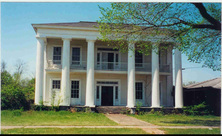 Click image to enlarge.
Click image to enlarge.
 Click image to enlarge. Click image to enlarge. The Johnston-Curtright House is among Tuskegee’s finest surviving Greek Revival dwellings. Constructed around 1850 for Burr Johnston, a prominent lawyer and delegate to the Alabama Constitutional Convention, the house features a two-story portico with six fluted Doric columns and a hand-carved staircase. Now seriously threatened by neglect, the Johnston-Curtright house is left open repeatedly to vagrants. Ruinous chimneys and open windows expose sections of the interior to the elements. Local preservationists are trying to work with the current owners to encourage the stabilization of the building and to look into options for purchase and restoration.
3 Comments
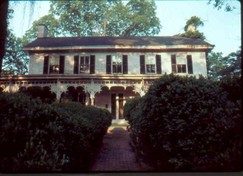 Click on image to enlarge. Click on image to enlarge. Locust Hill, a fine and very early residence in Tuscumbia, is one of the oldest surviving brick houses in the state. Constructed in 1823, it was the home of William H. Winter of Prince William County, Virginia, and his wife Frances Washington, kin to George Washington. During the Civil War, the house served as the headquarters for Colonel Florence M. Cornyn. Cabinetmaker William Braden carved its fine mantelpieces and Federal-style woodwork. An exuberant Eastlake porch was added across the front in the 1880s. 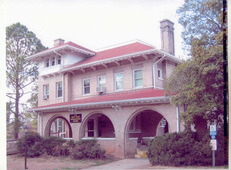 Click image to enlarge. Click image to enlarge. Designed by noted Birmingham architect William C. Weston, the Otto Marx Mansion is one of the finest examples of Mission Revival domestic architecture in the state. Two years after its construction in 1909, the house appeared in The Architectural Record (July 1911), a prestigious trade magazine. The Marx Mansion is a major landmark on Highland Avenue, Birmingham’s elegant turn-of-the-century boulevard. Despite its architectural significance, its prime location makes it a tempting target for demolition and redevelopment. A developer who has a contract on the property plans to demolish it and construct a high-rise condominium in its place. Preservationists and the local neighborhood association have convinced the city of Birmingham to delay action on issuing the demolition permit.  Built in 1856, the old Memphis and Charleston Railroad freight depot is Alabama’s oldest surviving example of railroad architecture and, along with the nearby passenger terminal (1860), apparently the only such antebellum depot complex left in the United States. During the Civil War, Huntsville’s important railroad facilities, including the freight depot, were captured by Union forces as part of their plan to sever Confederate rail links from east to west. The buildings were spared, for the most part, and the structures had remained surprisingly intact over the years. A 1997 grant from the Alabama Historical Commission to the Historic Huntsville Foundation re-roofed the structure, which was to be rehabilitated as part of the city of Huntsville’s long-range downtown revitalization program. 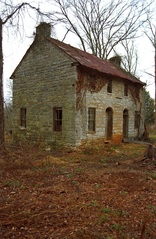 Click image to enlarge. Click image to enlarge. The “Old Rock House” is a house unlike anything commonly seen in Alabama. Possibly dating before 1842, the house might be the state’s lone surviving example of an early stone dwelling. It might also have region-wide significance as one of but a few extant houses of this kind in the Southeast. With its small upper-level windows, carefully laid native limestone blocks, and twin doorways with elliptical transoms, paneled recessed openings and arched stone surrounds, the rock house looks decidedly out of place in the Alabama landscape. So unique is this dwelling that surveyors with the Historic American Buildings Survey (HABS) photographed and recorded it in 1935. Today the house remains mostly intact, though time has taken its toll. One corner of the house now leans and vegetation has caused deterioration of the old mortar and the wood windowsills. An encouraging sign is that the current owner is aware of its significance and hopes to preserve it if possible. |
Alabama's Endangered Historic LandmarksEach year since 1994, Alabama Heritage has highlighted threatened historic sites throughout Alabama. The “Places in Peril” list has identified more than 215 imperiled historic resources throughout the state, and is compiled by the Alabama Historical Commission and the Alabama Trust for Historic Preservation. The locations highlight the results of deferred maintenance, perceived obsolescence, development pressures, and lack of funding—forces that now more than ever threaten our cultural legacy. But awareness is a powerful force, too, and can cultivate a renewed determination to be responsible stewards of our heritage. For more information, visit the AHC or the ATHP websites. Alabama Heritage is proud to bring to you a selection of the places designated as perilous. Please keep your comments to information relevant to the featured place in peril. Alabama Heritage reserves the right to delete any comment that we deem inappropriate. Archives
May 2024
|
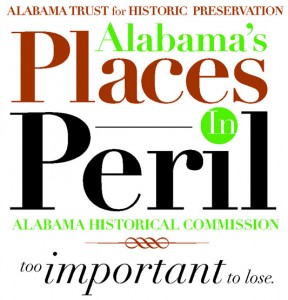
 RSS Feed
RSS Feed